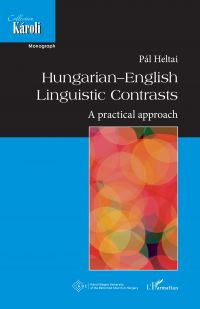Hungarian-English Linguistic Contrasts
Éditeur : Harmattan
ISBN numérique PDF: 9782336405056
Parution : 2024
Catégorisation :
Livres numériques /
Autre /
Autre /
Autre.
Formats disponibles
| Format | Qté. disp. | Prix* | Commander |
|---|---|---|---|
| Numérique PDF Protection filigrane*** |
Illimité | Prix : 26,27 $ |
*Les prix sont en dollars canadien. Taxes et frais de livraison en sus.
***Ce produit est protégé en vertu des droits d'auteurs.
Description
There is no denying that linguistic contrasts between languages can have an impact on the learning of foreign languages, and there is no doubt that an awareness of the differences between the mother tongue (L1) and the foreign or second language being learnt (L2) can help learners to acquire the L2. The aim of this book is to acquaint Hungarian students of English with some of the linguistic contrasts between English and Hungarian that may affect their own and their future students' learning of English. The author, Pál Heltai, provides a summary of the most important principles and concepts proposed by classical contrastive analysis, highlighting those that have retained their relevance for foreign language teaching over the years and presents an overview of the most important contrasts between English and Hungarian at the level of– phonetics, syntax, lexicology, pragmatics and translation. Most chapters consist of a theoretical introduction complemented by illustrative texts with example sentences and translations. The book provides a good opportunity for students to recapitulate or supplement some of the material covered earlier in their linguistics courses at university and shows the relevance of these disciplines to foreign language learning, teaching and translation. This is the revised version of the previous book, supplemented by suggested solutions to the exercises. This edition is also available online.























